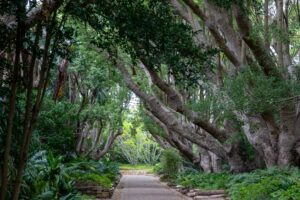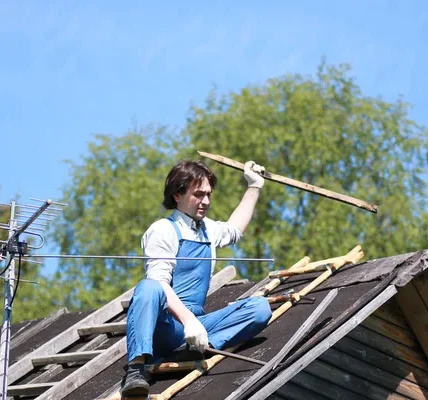
Identifying and Managing Tree Pests in Lexington
When trees and shrubs get diseased or attacked by insects, symptoms can look similar to the natural condition of a tree. Examples include stippled, yellow, or dry foliage or bark holes.
Homeowners may need to look for early warning signs of these problems on their property. Lexington KY Tree Services Certified Arborists are available to assist with the diagnosis and treatment of these conditions as they arise in Lexington.
Verticillium Wilt
Verticillium wilt is caused by the fungus, Verticillium dahliae. The fungus invades susceptible plants by entering wounds and through root buttresses. Once in the plant, the fungus grows upward within vascular tissue plugging water conducting vessels and restricting flow to leaves and roots.
Trees and shrubs that are infected with verticillium wilt can be saved with proper watering and fertilization. Watering regularly and fertilizing with a low nitrogen, high phosphorous formula can improve vigor. Pruning dead or diseased branches and disinfecting pruning tools between cuts is also important.
Some trees (such as maples) are very susceptible to this disease, while others may have resistance. The fungus can sometimes be contained behind barriers of new wood, allowing symptoms to moderate or even disappear for several years.
Thousand Cankers Disease
Thousand Cankers Disease is a highly destructive disease of black walnut (Juglans nigra) and related species. It is caused by a fungus (Geosmithia morbida) carried by the walnut twig beetle and typically kills the infected tree within two to three years of first noticeable symptoms.
Symptoms begin as yellowing foliage and progress to brown wilted branches and stems. Close examination of a cankered tree will reveal pin-hole sized entrance and exit holes and dark, inky, circular to oblong cankers. These cankers girdle the phloem preventing its transport and limiting nutrient uptake leading to death.
Preventative management includes removing infested trees and reducing the build-up of insect inoculum through proper pruning and wood disposal. In addition, the use of non-susceptible tree species should be considered. Currently, most eastern states have enacted quarantines restricting the movement of nursery and walnut wood.
Bacterial Leaf Scorch
Bacterial Leaf Scorch (BLS) is a systemic disease that attacks many shade trees. This disease is caused by the bacterium Xylella fastidiosa, which invades the xylem tissue and restricts water flow. This can lead to dehydration of the crown and drought symptoms.
Symptoms of BLS include an irregular scorching pattern and a chlorotic halo around the margins of leaves. On elms, sycamores and other trees with determinate growth habits, symptoms progress from older to younger leaves as the disease develops over time.
A good time to test for BLS is late summer or early fall, as this is when Xylella populations in the tree are highest. Symptomatic branches and dead wood should be pruned promptly to reduce hazard and to minimize the spread of the disease. Infection is also enhanced by environmental stress, such as drought, so it’s important to replace diseased trees with tolerant species.
Ganoderma Root Rot
Ganoderma is a serious root and butt rot pathogen that affects oaks (Quercus spp.), maples (Acer spp.), and elms (Ulmus americana) as well as many deciduous and conifer species. It also infects a wide range of other woody trees and shrubs.
Ganoderma infects open wounds of susceptible trees by spreading airborne spores during moist periods. A new round of spores is produced each year at the site of a previous infected wound, leading to the formation of shelf-like brackets that are known as conks.
Seeing conks on the base or roots of your tree is an indication that the fungus has already invaded the heartwood and may be progressing up the trunk to cause structural damage to the tree. There is no product in commerce that controls this disease, so early identification and an ISA-certified arborist consultation are key.
Inonotus Root Rot
This fungus is common in spruce stands, especially when site conditions are wet, and has also been found on maple, birch, apple, elm, and hickory. It rots roots and butt wood, reducing their structural integrity. Like Armillaria, it can be spread by wounding trees during pruning or by using mowers and equipment within the root zone.
This fungus looks for all the world like what your non-mushroom friends think mushrooms look like, except it’s dark brown with buff spore surfaces under a light yellow margin. Infected trees display a slow growth rate, smaller than normal needles on evergreens, and winter twig dieback. This disease often appears patchy, so it can be difficult to quantify in a stand. A diagnosis requires a sample of the base wood for examination.

